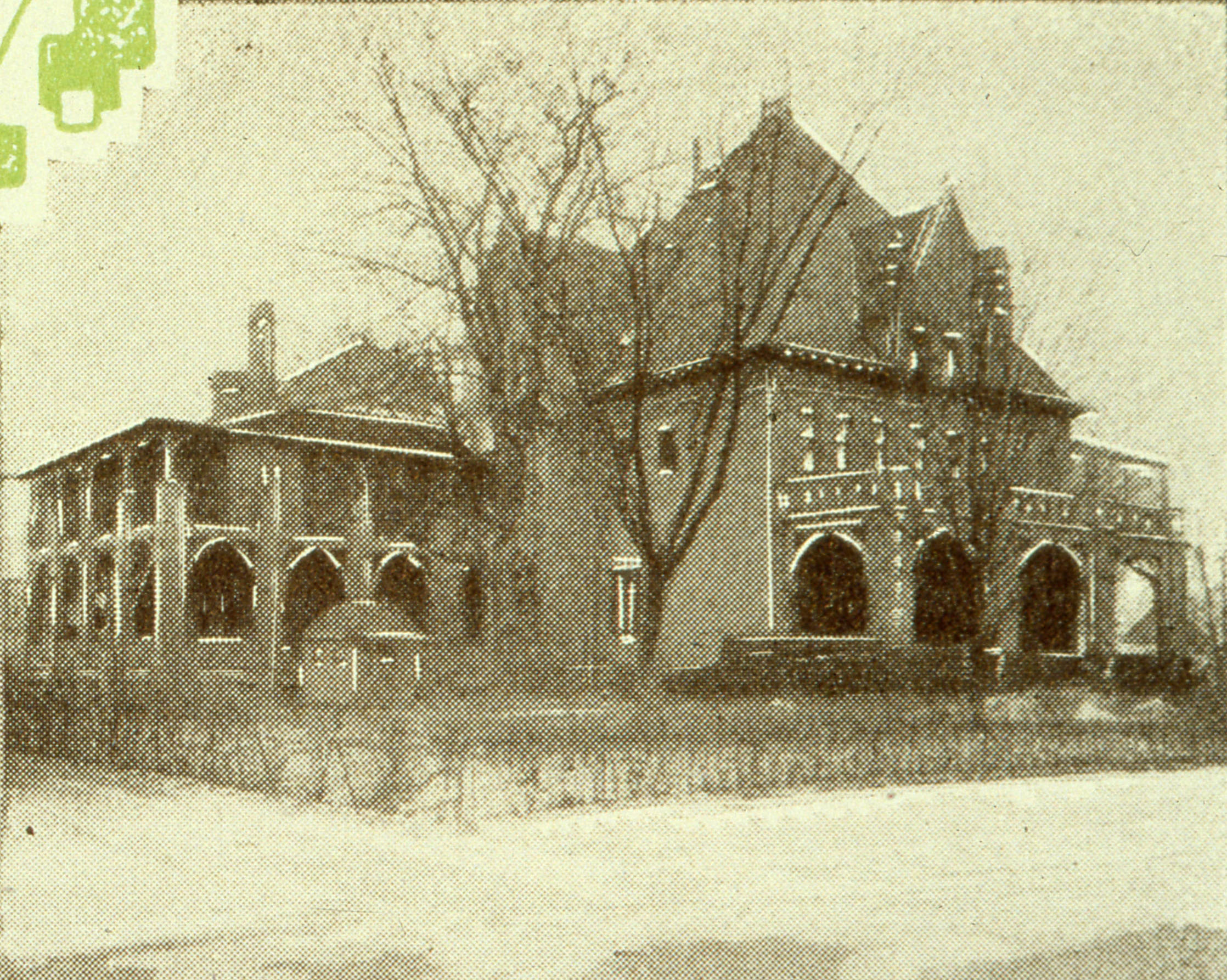|
The Cancer Genome Atlas (TCGA)
The Cancer Genome Atlas (TCGA) is a project to catalogue the genomic alterations responsible for cancer using genome sequencing and bioinformatics. The overarching goal was to apply high-throughput genome analysis techniques to improve the ability to diagnose, treat, and prevent cancer through a better understanding of the genetic basis of the disease. TCGA was supervised by the National Cancer Institute's Center for Cancer Genomics and the National Human Genome Research Institute funded by the US government. A three-year pilot project, begun in 2006, focused on characterization of three types of human cancers: glioblastoma multiforme, lung squamous carcinoma, and ovarian serous adenocarcinoma. In 2009, it expanded into phase II, which planned to complete the genomic characterization and sequence analysis of 20–25 different tumor types by 2014. Ultimately, TCGA surpassed that goal, characterizing 33 cancer types including 10 rare cancers. The project initially set out to c ... [...More Info...] [...Related Items...] OR: [Wikipedia] [Google] [Baidu] |
Genomic Alteration
Genomics is an interdisciplinary field of biology focusing on the structure, function, evolution, mapping, and editing of genomes. A genome is an organism's complete set of DNA, including all of its genes as well as its hierarchical, three-dimensional structural configuration. In contrast to genetics, which refers to the study of ''individual'' genes and their roles in inheritance, genomics aims at the collective characterization and quantification of ''all'' of an organism's genes, their interrelations and influence on the organism. Genes may direct the production of proteins with the assistance of enzymes and messenger molecules. In turn, proteins make up body structures such as organs and tissues as well as control chemical reactions and carry signals between cells. Genomics also involves the sequencing and analysis of genomes through uses of high throughput DNA sequencing and bioinformatics to assemble and analyze the function and structure of entire genomes. Advances in ge ... [...More Info...] [...Related Items...] OR: [Wikipedia] [Google] [Baidu] |
Exon
An exon is any part of a gene that will form a part of the final mature RNA produced by that gene after introns have been removed by RNA splicing. The term ''exon'' refers to both the DNA sequence within a gene and to the corresponding sequence in RNA transcripts. In RNA splicing, introns are removed and exons are covalently joined to one another as part of generating the mature RNA. Just as the entire set of genes for a species constitutes the genome, the entire set of exons constitutes the exome. History The term ''exon'' derives from the expressed region and was coined by American biochemist Walter Gilbert in 1978: "The notion of the cistron… must be replaced by that of a transcription unit containing regions which will be lost from the mature messengerwhich I suggest we call introns (for intragenic regions)alternating with regions which will be expressedexons." This definition was originally made for protein-coding transcripts that are spliced before being translated. ... [...More Info...] [...Related Items...] OR: [Wikipedia] [Google] [Baidu] |
University Of California, Santa Cruz
The University of California, Santa Cruz (UC Santa Cruz or UCSC) is a public land-grant research university in Santa Cruz, California. It is one of the ten campuses in the University of California system. Located on Monterey Bay, on the edge of the coastal community of Santa Cruz, the campus lies on of rolling, forested hills overlooking the Pacific Ocean. Founded in 1965, UC Santa Cruz began with the intention to showcase progressive, cross-disciplinary undergraduate education, innovative teaching methods and contemporary architecture. The residential college system consists of ten small colleges that were established as a variation of the Oxbridge collegiate university system. Among the Faculty is 1 Nobel Prize Laureate, 1 Breakthrough Prize in Life Sciences recipient, 12 members from the National Academy of Sciences, 28 members of the American Academy of Arts and Sciences, and 40 members of the American Association for the Advancement of Science. Eight UC Santa Cruz alu ... [...More Info...] [...Related Items...] OR: [Wikipedia] [Google] [Baidu] |
Cancer Genomics Hub
Cancer is a group of diseases involving abnormal cell growth with the potential to invade or spread to other parts of the body. These contrast with benign tumors, which do not spread. Possible signs and symptoms include a lump, abnormal bleeding, prolonged cough, unexplained weight loss, and a change in bowel movements. While these symptoms may indicate cancer, they can also have other causes. Over 100 types of cancers affect humans. Tobacco use is the cause of about 22% of cancer deaths. Another 10% are due to obesity, poor diet, lack of physical activity or excessive drinking of alcohol. Other factors include certain infections, exposure to ionizing radiation, and environmental pollutants. In the developing world, 15% of cancers are due to infections such as ''Helicobacter pylori'', hepatitis B, hepatitis C, human papillomavirus infection, Epstein–Barr virus and human immunodeficiency virus (HIV). These factors act, at least partly, by changing the genes of a cell. Typ ... [...More Info...] [...Related Items...] OR: [Wikipedia] [Google] [Baidu] |
SRA International
SRA may refer to: * SRA0 to SRA4, standard paper sizes defined by ISO 217 * Satanic ritual abuse * SRa or SRA, a type of semiregular variable star * Senior Airman (SrA), a US Air Force rank * Septic Reserve Area, for a septic drain field * The National Center for Biotechnology Information's Sequence Read Archive (previously Short Read Archive) * Serotonin releasing agent, a type of drug * Serotonin-release assay, a test for platelet-activating antibodies * SRA-shooting, Sovellettu reserviläisammunta, a type of shooting sport from Finland * Stratford station, London, UK, station code * Superhuman Registration Act, a fictitious law in Marvel Comics * Surveillance radar approach in aviation * Solicitors Regulation Authority Companies and organizations * Samsung Research America, a subsidiary of Samsung Electronic * Science Research Associates, US educational publisher * Secretariat of Agrarian Reform, Mexico * Sexual Recovery Anonymous, a sexual addiction program * Skiff Racing Ass ... [...More Info...] [...Related Items...] OR: [Wikipedia] [Google] [Baidu] |
Baylor College Of Medicine
Baylor College of Medicine (BCM) is a medical school and research center in Houston, Texas, within the Texas Medical Center, the world's largest medical center. BCM is composed of four academic components: the School of Medicine, the Graduate School of Biomedical Sciences; the School of Health Professions, and the National School of Tropical Medicine. The school is part owner, alongside Catholic Health Initiatives (CHI), of Baylor St. Luke's Medical Center, the flagship hospital of the CHI St. Luke's Health system. Other affiliated teaching hospitals and research institutes include Harris Health System's Ben Taub Hospital, Texas Children's Hospital, The University of Texas MD Anderson Cancer Center, TIRR Memorial Hermann, the Menninger Clinic, the Michael E. DeBakey VA Medical Center, and the Children's Hospital of San Antonio. On November 18, 2020, Baylor College of Medicine announced a new affiliation with Baylor Scott & White Health. This will result in the development o ... [...More Info...] [...Related Items...] OR: [Wikipedia] [Google] [Baidu] |
McDonnell Genome Institute
McDonnell Genome Institute (The Elizabeth H. and James S. McDonnell III Genome Institute) at Washington University in St. Louis, Missouri, is one of three NIH funded large-scale sequencing centers in the United States. Affiliated with Washington University School of Medicine and the Alvin J. Siteman Cancer Center, the McDonnell Genome Institute is creating, testing and implementing new approaches to the study of genomics with the goal of understanding human health and disease, as well as evolution and the biology of other organisms. History Founded in 1993, the McDonnell Genome Institute, formerly the Genome Sequencing Center and The Genome Institute, began as a key player in the Human Genome Project, ultimately contributing more than 25 percent of the finished sequence. Following completion of the working draft of the human genome in 2000, and the finished human genome sequence in 2003, McDonnell Genome Institute turned its sequencing and analysis skills to determining the genome ... [...More Info...] [...Related Items...] OR: [Wikipedia] [Google] [Baidu] |
Broad Institute
The Eli and Edythe L. Broad Institute of MIT and Harvard (IPA: , pronunciation respelling: ), often referred to as the Broad Institute, is a biomedical and genomic research center located in Cambridge, Massachusetts, United States. The institute is independently governed and supported as a 501(c)(3) nonprofit research organization under the name Broad Institute Inc., and it partners with the Massachusetts Institute of Technology, Harvard University, and the five Harvard teaching hospitals. History The Broad Institute evolved from a decade of research collaborations among MIT and Harvard scientists. One cornerstone was the Center for Genome Research of Whitehead Institute at MIT. Founded in 1982, the Whitehead became a major center for genomics and the Human Genome Project. As early as 1995, scientists at the Whitehead started pilot projects in genomic medicine, forming an unofficial collaborative network among young scientists interested in genomic approaches to cancer and ... [...More Info...] [...Related Items...] OR: [Wikipedia] [Google] [Baidu] |
Nationwide Children's Hospital
Nationwide Children's Hospital (formerly Columbus Children's Hospital) is a nationally ranked pediatric acute care teaching hospital located in the Southern Orchards neighborhood of Columbus, Ohio. The hospital has 673 pediatric beds and is affiliated with the Ohio State University College of Medicine. The hospital provides comprehensive pediatric specialties and subspecialties to infants, children, teens, and young adults aged 0–21 throughout Ohio and surrounding regions. Nationwide Children's Hospital also sometimes treats adults that require pediatric care. Nationwide Children's Hospital also features an ACS designated Level 1 Pediatric Trauma Center, 1 of 4 in the state. The hospital has affiliations with the nearby Ohio State University Wexner Medical Center. Nationwide Children's Hospital is located on its own campus and has more than 1,379 medical staff members and over 11,909 total employees. In recent years, the hospital has been ranked as one of America's Best Childr ... [...More Info...] [...Related Items...] OR: [Wikipedia] [Google] [Baidu] |
DNA Purification
Nucleic acid methods are the techniques used to study nucleic acids: DNA and RNA. Purification * DNA extraction * Phenol–chloroform extraction * Minicolumn purification * RNA extraction *Boom method *Synchronous coefficient of drag alteration (SCODA) DNA purification Quantification *Abundance in weight: spectroscopic nucleic acid quantitation *Absolute abundance in number: real-time polymerase chain reaction (quantitative PCR) *High-throughput relative abundance: DNA microarray *High-throughput absolute abundance: serial analysis of gene expression (SAGE) *Size: gel electrophoresis Synthesis *''De novo'': oligonucleotide synthesis *Amplification: polymerase chain reaction (PCR) Kinetics * Multi-parametric surface plasmon resonance * Dual-polarization interferometry *Quartz crystal microbalance with dissipation monitoring (QCM-D) Gene function * RNA interference Other * Bisulfite sequencing *DNA sequencing *Expression cloning * Fluorescence in situ hybridization * Lab-on- ... [...More Info...] [...Related Items...] OR: [Wikipedia] [Google] [Baidu] |
Germline
In biology and genetics, the germline is the population of a multicellular organism's cells that pass on their genetic material to the progeny (offspring). In other words, they are the cells that form the egg, sperm and the fertilised egg. They are usually differentiated to perform this function and segregated in a specific place away from other bodily cells. As a rule, this passing-on happens via a process of sexual reproduction; typically it is a process that includes systematic changes to the genetic material, changes that arise during recombination, meiosis and fertilization for example. However, there are many exceptions across multicellular organisms, including processes and concepts such as various forms of apomixis, autogamy, automixis, cloning or parthenogenesis. The cells of the germline are called germ cells. For example, gametes such as a sperm and an egg are germ cells. So are the cells that divide to produce gametes, called gametocytes, the cells that produce ... [...More Info...] [...Related Items...] OR: [Wikipedia] [Google] [Baidu] |
Milligram
The kilogram (also kilogramme) is the unit of mass in the International System of Units (SI), having the unit symbol kg. It is a widely used measure in science, engineering and commerce worldwide, and is often simply called a kilo colloquially. It means 'one thousand grams'. The kilogram is defined in terms of the second and the metre, both of which are based on fundamental physical constants. This allows a properly equipped metrology laboratory to calibrate a mass measurement instrument such as a Kibble balance as the primary standard to determine an exact kilogram mass. The kilogram was originally defined in 1795 as the mass of one litre of water. The current definition of a kilogram agrees with this original definition to within 30 parts per million. In 1799, the platinum '' Kilogramme des Archives'' replaced it as the standard of mass. In 1889, a cylinder of platinum-iridium, the International Prototype of the Kilogram (IPK), became the standard of the unit of mass f ... [...More Info...] [...Related Items...] OR: [Wikipedia] [Google] [Baidu] |





